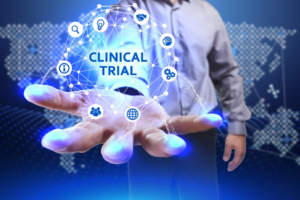Clinical Trial Phases refer to the sequential stages that a new drug or treatment undergoes before it can be considered safe and effective for widespread use. Each phase is designed to answer specific research questions and is a critical part of the drug development process. Here’s an in-depth look at each phase: Preclinical Research Before a new treatment enters clinical trials, it undergoes preclinical research. This stage involves laboratory and animal studies to identify potential treatment effects. Researchers assess various aspects like toxicity, pharmacokinetics (how the body processes the drug), and pharmacodynamics (how the drug affects the body). This stage is crucial for determining whether a drug is safe enough to be tested in humans. Clinical Trial Phase 0 Phase 0 trials, also known as microdosing studies, are the first stage involving human subjects. They are small trials involving a very limited number of participants (around 10-15). The goal is to gather preliminary data on how the drug behaves in the human body. The doses used are too small to cause therapeutic effects but help in understanding the drug’s pharmacokinetics and pharmacodynamics. Clinical Trial Phase I Phase I trials primarily focus on a drug’s safety profile. This phase involves a small group of 20-100 participants, which may include healthy volunteers or patients. The main aim is to determine the drug’s most frequent and serious side effects and the dose range. These trials start with a low dose of the drug, which is gradually increased to find the highest dose that can be given safely without serious side effects (Maximum Tolerated Dose, MTD). Clinical Trial Phase II Phase II trials assess the efficacy of the drug, along with its safety. This phase involves several hundred patients who have the condition that the drug is meant to treat. These trials provide additional safety data and begin to evaluate how well the drug works. This phase can be divided into Phase IIa (pilot studies to assess efficacy) and Phase IIb (rigorous studies to test the drug’s effectiveness). Clinical Trial Phase III In Phase III, the drug is given to large groups of people (from 100 to several thousand) to confirm its effectiveness, monitor side effects, compare it to commonly used treatments, and collect information that will allow the drug to be used safely. These trials are randomized and double-blind and provide a thorough understanding of the drug’s effectiveness and the balance of risks and benefits. Successful completion of Phase III is generally required for the drug to be considered for approval by regulatory bodies like the FDA. Clinical Trial Phase IV After a drug is approved for use by the FDA and made available to the public, Phase IV trials, also known as Post-Marketing Surveillance Trials, are conducted to gather information on the drug’s effect in various populations and any side effects associated with long-term use. These studies can result in a drug being taken off the market or restrictions of use if long-term problems are identified. Phase Primary Focus Participant Numbers Key Objectives Notable Features Preclinical Safety and biological activity None (animal and lab studies) – Evaluate toxicity, pharmacokinetics, and pharmacodynamics<br>- Determine if safe for human trials – Conducted in laboratory settings<br>- Involves animal testing<br>- No human participants involved Phase 0 Drug behavior in humans 10-15 – Understand pharmacokinetics and pharmacodynamics<br>- Establish if further testing is warranted – Very small doses of the drug<br>- Not intended to test therapeutic effects<br>- Provides early assessment of drug behavior Phase I Safety and dosage 20-100 – Identify side effects<br>- Determine Maximum Tolerated Dose (MTD) – Often involves healthy volunteers<br>- First time the drug is tested in humans<br>- Focus on safety over efficacy Phase II Efficacy and side effects Several hundred – Assess the drug’s effectiveness for a specific condition<br>- Further evaluate safety – Participants have the condition the drug is meant to treat<br>- Divided into Phase IIa (pilot efficacy studies) and Phase IIb (rigorous efficacy studies) Phase III Confirm effectiveness 100 to several thousand – Confirm therapeutic effect<br>- Monitor side effects<br>- Compare to standard treatments – Randomized and double-blind trials<br>- Large participant group<br>- Critical for FDA approval Phase IV Long-term effects Several hundred to thousands – Gather information on long-term safety and effectiveness<br>- Understand drug impact in diverse populations – Conducted after FDA approval<br>- Post-marketing surveillance<br>- Can lead to drug being taken off the market or usage restrictions if long-term issues are identified Conclusion Each phase of a clinical trial plays a crucial role in ensuring the safety and efficacy of new drugs. The process is rigorous and designed to protect patients while providing clear and reliable data on the drug’s benefits and risks. Understanding these phases is essential for anyone involved in the field of drug development, healthcare, or patients considering participation in a clinical trial.
